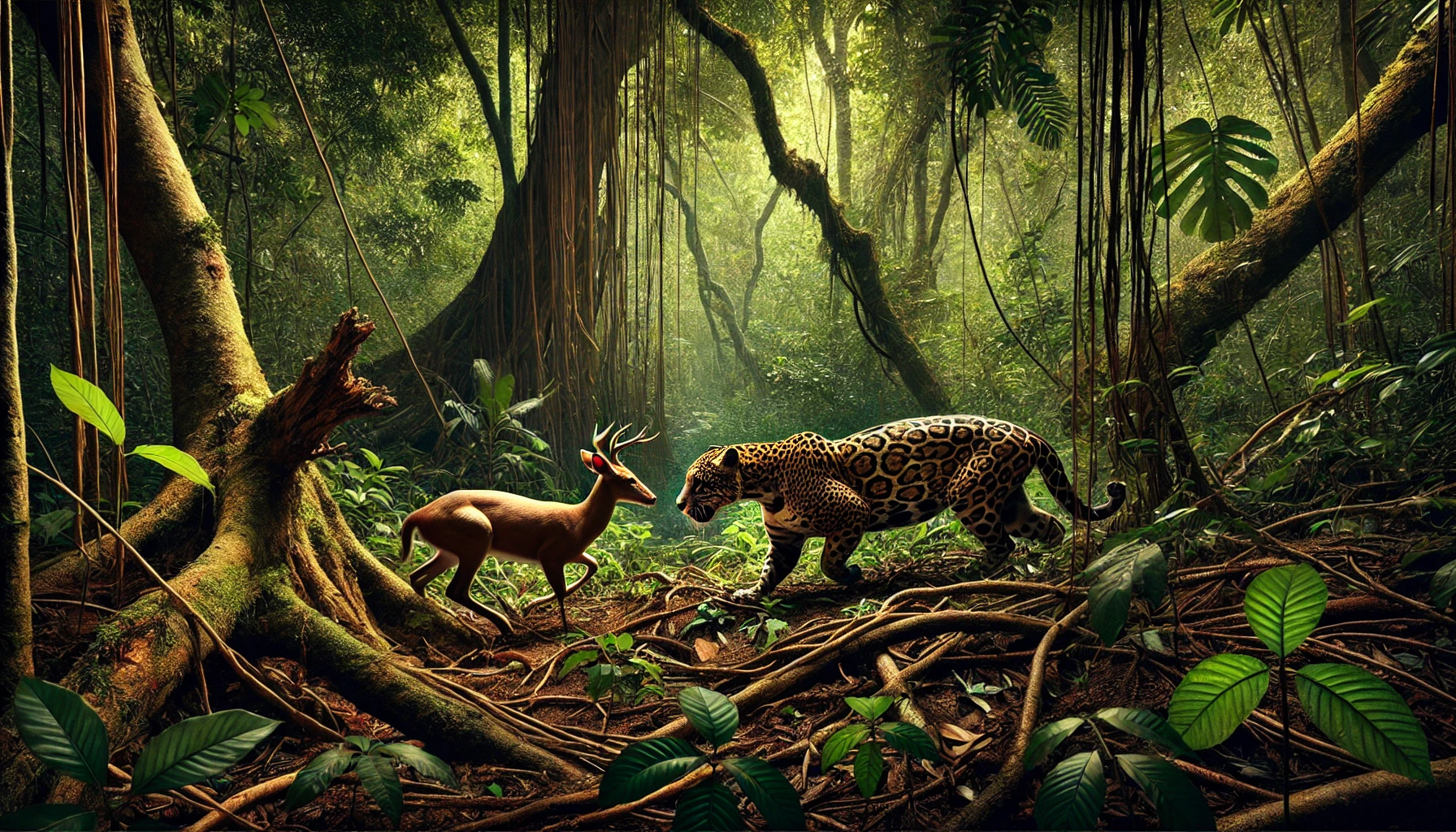Table of Contents
The savanna, with its vast grasslands and scattered trees, is home to a complex and fascinating food web. Understanding the secrets of the Savanna Food Web reveals the intricate relationships between predators, prey, and plants that make survival possible in this harsh environment. In this article, we’ll dive deep into the wild survival tactics used by the inhabitants of the savanna, exploring how each species plays a crucial role in maintaining the balance of this unique ecosystem.
What Is a Savanna Food Web?
A Savanna Food Web is a network of interconnected food chains in the savanna biome. Unlike a simple food chain, where each organism eats the one before it, a food web shows the complex relationships and multiple food sources that animals rely on for survival. This vast and intricate web involves herbivores, carnivores, and plants.
Key Players in the Savanna Food Web
The producers are at the base of the savanna food web—plants like grass and acacia trees that convert sunlight into energy through photosynthesis. These plants are the primary food source for herbivores such as zebras, gazelles, and elephants. Above them in the food web are the carnivores and omnivores, including lions, hyenas, and vultures, who feed on the herbivores and sometimes each other.
Herbivores: The Primary Consumers

Herbivores play a vital role in the Savanna Food Web as primary consumers. They are the animals that directly consume the plants, converting the energy stored in plant tissues into a form that can be used by other animals higher up in the food web.
Grazers and Browsers
In the savanna, herbivores are often divided into grazers and browsers. Grazers, like zebras and wildebeests, feed mainly on grass, while browsers, like giraffes and elephants, prefer the leaves, twigs, and fruits of trees and shrubs. These feeding habits help maintain plant life balance, preventing species from becoming dominant.
The Importance of Herbivores
Without herbivores, the Savanna Food Web would collapse. They provide a crucial link between plants and predators, help disperse seeds, and fertilize the soil with their waste, promoting the growth of new plants and maintaining the health of the ecosystem.
Carnivores: The Apex Predators

At the top of the Savanna Food Web are the carnivores, the apex predators who keep the population of herbivores in check. These powerful animals are essential for maintaining the balance of the savanna ecosystem.
The Role of Lions in the Savanna
Lions are the savanna’s most iconic predators, often called the “king of the jungle.” They hunt in groups called pride, using teamwork to take down large prey like zebras and buffaloes. By controlling the herbivore population, lions help prevent overgrazing, which could lead to desertification.
Omnivores: The Flexible Survivors
Omnivores, who eat plants and animals, add another layer of complexity to the Savanna Food Web. Their flexible diet allows them to survive in a wide range of conditions and adapt to changes in food availability.
The Role of Baboons
Baboons are one of the most adaptable omnivores in the savanna. They eat everything from fruits and seeds to insects and small mammals. This varied diet allows them to thrive in different environments and helps them survive when one food source becomes scarce.
Decomposers: Nature’s Recyclers
No discussion of the Savanna Food Web would be complete without mentioning decomposers. These organisms, including fungi, bacteria, and insects, break down dead plants and animals, returning essential nutrients to the soil.
The Role of Decomposers
Decomposers play a crucial role in the savanna by breaking down organic matter and recycling it into the ecosystem. Without them, the nutrients locked in dead plants and animals would be lost, and the soil would become depleted, making it difficult for new plants to grow.
The Impact of Human Activity on the Savanna Food Web
Unfortunately, human activity is significantly impacting the Savanna Food Web. Habitat loss, hunting, and climate change threaten this ecosystem’s delicate balance.
Habitat Loss and Fragmentation
As humans expand their agricultural activities, more and more savanna land is converted into farmland. This loss of habitat reduces the amount of space available for wildlife and fragments the ecosystem, making it difficult for animals to find food and mates.
The Threat of Hunting
Poaching and hunting for bushmeat have also damaged the Savanna Food Web. The loss of critical species, giant herbivores, and carnivores, can disrupt the balance of the ecosystem and lead to the collapse of food chains.
The Future of the Savanna Food Web
The future of the Savanna Food Web depends on our ability to protect and preserve this unique ecosystem. Conservation efforts, such as protecting wildlife habitats, enforcing anti-poaching laws, and mitigating the effects of climate change, are essential for ensuring the survival of the savanna and its inhabitants.
Conservation Efforts
Organizations worldwide are working to protect the savanna by creating protected areas, restoring degraded habitats, and raising awareness about its importance. By supporting these efforts, we can help ensure that the Savanna Food Web remains intact for future generations.
The Role of Education
Education is also critical to the future of the Savanna Food Web. By teaching people about the savanna’s importance and the threats it faces, we can inspire a new generation of conservationists who will work to protect this vital ecosystem.
Also Read: Food Web for Tropical Forest: Discover the Astonishing Balance
The Savanna Food Web is a complex and intricate system that supports a wide range of life. From the plants at the base to the apex predators at the top, each species plays a crucial role in maintaining the balance of this ecosystem. By understanding the secrets of the Savanna Food Web and the wild survival tactics used by its inhabitants, we can better appreciate the importance of this unique environment and the need to protect it for future generations.




